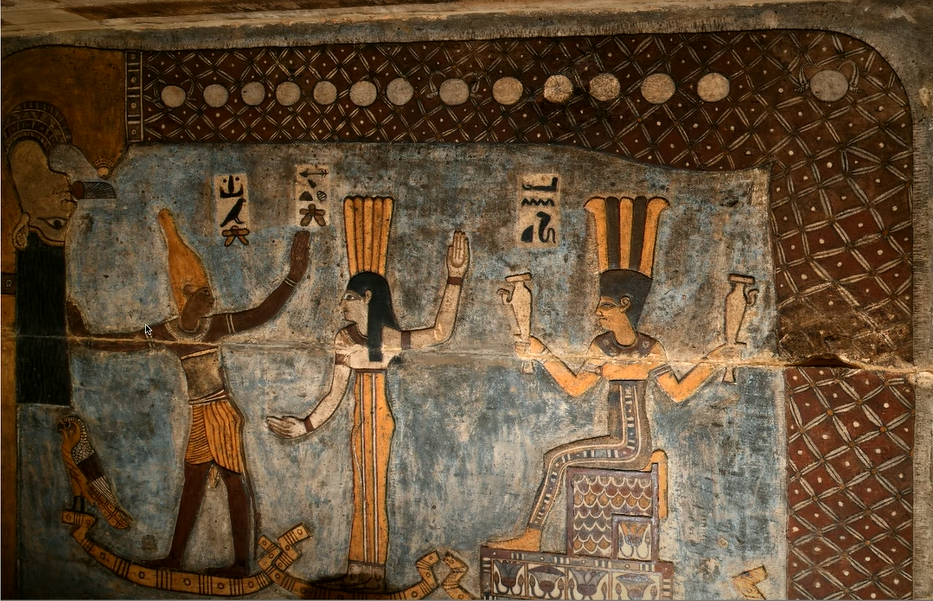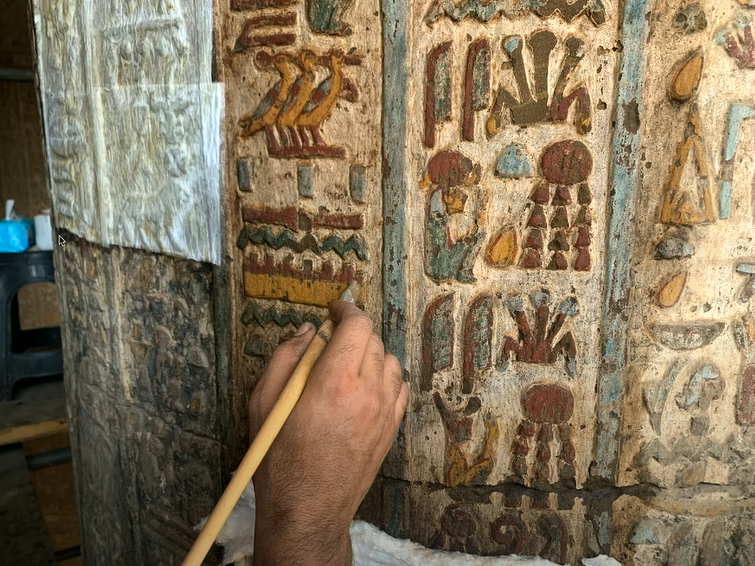Beneath the Sands The Vibrant Colors of Esna

By Yara Marei / Arab America Contributing Writer.
For centuries, the Temple of Esna lay hidden beneath layers of silt and sand, its grandeur buried and its secrets forgotten. Travelers passing through the Nile’s banks could scarcely imagine the vibrant colors of sanctuary that once stood there, alive with the prayers of ancient worshippers and adorned with dazzling colors. It wasn’t until modern restoration efforts unveiled its true splendor that the temple’s story came back to life. Let’s deep dive into this journey of an ancient masterpiece reclaimed from the embrace of time, ready to share its wonders with the world with Yara Marei, Arab America Contributing Writer.
A Rediscovered Marvel of Ancient Egypt

The Temple of Esna, an architectural gem in Upper Egypt, has long been a site of intrigue for archaeologists and historians. Dedicated to the ram-headed god Khnum, this ancient sanctuary embodies the artistic and architectural brilliance of ancient Egypt. Hidden beneath centuries of grime and silt, its true magnificence has only recently come to light through meticulous restoration efforts.
A Testament to Ancient Egyptian Artistry

The Temple of Esna’s hypostyle hall stands as a masterpiece of ancient architecture. Its towering columns, adorned with intricate carvings, evoke awe and wonder, showcasing the extraordinary skill of ancient Egyptian artisans. Strategically located on the Nile River’s banks, the temple was a hub of trade and religious activity, further cementing its significance in antiquity.
Recent restoration efforts have unveiled vibrant colors that once adorned the temple’s walls, breathing new life into its rich history. These discoveries offer invaluable insights into the artistic techniques, religious beliefs, and daily lives of the ancient Egyptians.
The Restoration Effort: Reviving a Hidden Treasure

The transformation of the Temple of Esna is the result of a collaborative effort involving archaeologists, Egyptologists, and conservationists from around the globe. Initiated by the Egyptian Ministry of Tourism and Antiquities, the project has received support from international universities and cultural heritage organizations.

Using advanced technologies, including laser cleaning, experts have meticulously removed layers of dirt and grime without damaging the original paintwork. The team also undertook the delicate task of stabilizing the temple’s structure to ensure its preservation for future generations. This international partnership underscores the shared responsibility of safeguarding humanity’s cultural heritage.
Historical Significance of the Temple of Esna colors

The temple’s history spans millennia, with origins tracing back to the Ptolemaic era. However, evidence suggests that a shrine dedicated to Khnum existed on the site long before this period. During the Greco-Roman era, the temple underwent significant expansion, with the hypostyle hall—the complex’s most striking feature—dating back to this time.
Roman Emperor Claudius contributed significantly to the temple’s expansion, as evidenced by inscriptions bearing his name. The temple remained an active religious site during the Roman period but was gradually abandoned with the rise of Christianity in the fourth century AD. Buried under layers of sand and debris, the temple lay dormant for centuries until partial excavations began in the 19th century.
The Unique Deity of Esna: Khnum

At the heart of the Temple of Esna lies the worship of Khnum, a deity with a fascinating and symbolic form. Khnum is often depicted as a figure with a crocodile’s head, symbolizing strength and resilience, while his body and legs resemble those of a cow, representing fertility and sustenance. His tail, shaped like a cobra, signifies protection and divine power. As the god of creation, Khnum was believed to mold human beings on his potter’s wheel, shaping their destinies from the clay of the Nile. This unique blend of animal attributes in Khnum’s form underscores his multifaceted role in the natural and spiritual realms, making him a central figure in the ancient Egyptians’ worldview.

Rediscovering Ancient Splendor

Recent restoration efforts have uncovered a dazzling array of colors and designs that were once concealed beneath centuries of sediment. The temple’s walls and ceilings, now revealed in their original polychrome splendor, showcase the ancient Egyptians’ mastery of pigments and decoration.

Among the most remarkable findings is a complete zodiac on the ceiling of the hypostyle hall. This depiction of the 12 constellations, painted in vivid detail, highlights the integration of astronomical knowledge into religious practices during the Greco-Roman period.
A Glimpse Into Ancient Lives

The vibrant inscriptions and motifs covering the temple’s walls provide an invaluable window into ancient Egyptian life. These texts document religious rituals, temple administration, and the community’s daily activities, offering a deeper understanding of the temple’s function and cultural significance.
Preserving a Legacy by Colors

The restoration of the Temple of Esna is a testament to the enduring importance of cultural preservation. This collaborative effort has not only revived a hidden marvel but also fostered a global appreciation for the rich heritage of ancient Egypt. The rediscovered brilliance of Esna serves as a reminder of humanity’s shared history and the timeless beauty of its artistic and architectural achievements.
Check out our blog here!








